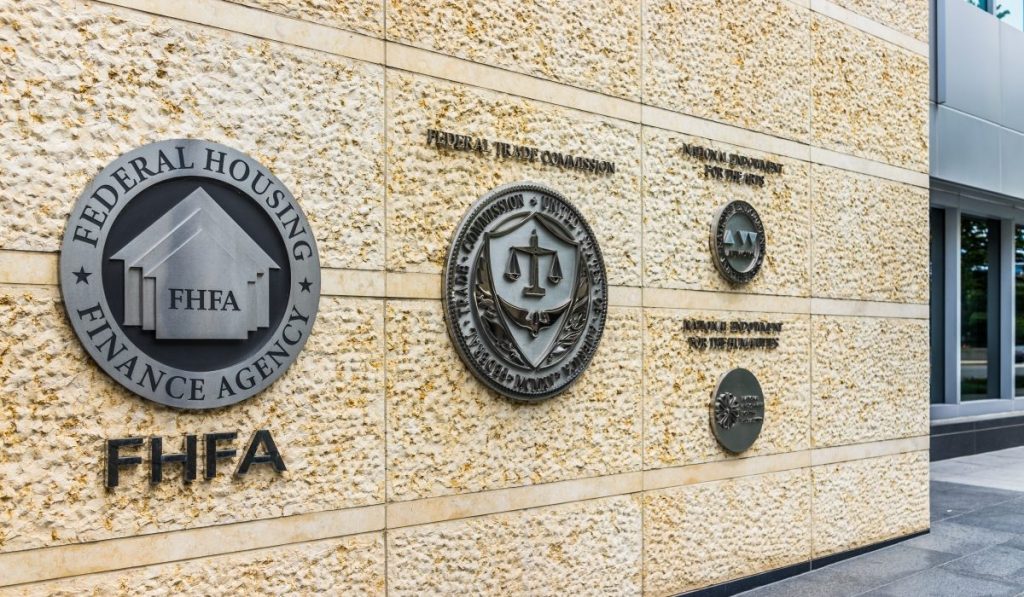Time is a funny thing in the mortgage business, moving in cycles like the economy. Yet, in good times we tend to forget that there will be bad times, and the bad times seem like they’ll have no end. More worrisome, though, we tend to forget the mistakes we make, allowing them to come back and bite us again when we let down our guard. The lack of historical memory is a great risk, however, something that we should all guard against. With that in mind, I thought it worth revisiting my decades of experience with the GSEs, and will discuss the danger in releasing the GSEs from conservatorship, as it seems that many of us have all but forgotten what we’ve learned.
My experience with the GSEs began in earnest in 1999 when I became the senior vice president in charge of Single Family at Freddie Mac, charged with overseeing all customer relationship management for the single family business. It was this period that framed my entire perspective of the GSEs and what made me appreciate that they are both critical to housing finance yet equally as dangerous to the same sector and the broader economy.
Warning signs
The first warning sign came, remarkably enough, in the wake of the Enron scandal. The implications of Enron contributed to the onset of collapse for these two mega giants born solely from how accounting was done on the duration of selected asset classes and derivatives. The events at Enron forced Fannie Mae to change accountants first, and then declare a multibillion dollar negative correction to previous earnings statements. Freddie Mac shortly followed as they, too, switched accounting firms and that resulted in a multibillion dollar adjustment in the opposite way.
Positive or negative is immaterial as investors, analysts, and policy makers were shocked by the massive restatements. Warren Buffett, one of the biggest investors, divested all GSE holdings between 2003 and 2005.
Then came the “Alliance Agreements.” Fannie had Countrywide, Freddie had Wells, and the two GSEs basically divvied up the largest lenders to majority share agreements that essentially locked in market share at levels that, frankly, regulators should have been more focused on. But these alliance deals had negative implications to the overall financial services sector because in exchange for an “alliance,” each respective GSE gave guaranteed competitive advantage to their largest customers.
For Fannie, they gave their customers such as Countrywide exclusive rights to programs, pricing and credit terms. They gave Countrywide an exclusive to the “Fast and Easy” program, a no-doc product approved almost entirely by credit score. For Freddie, they did similar waivers for Wells Fargo. Both of these mega lenders were given better base g-fees, risk based pricing, buy up and buy down grids, and more.
The outcome of this led to an even greater market power for the mega lenders. And it was not restricted to just Wells and Countrywide. US Bank, Bank of America, Chase, WAMU, Wachovia, Nat City and more fell into this preferred category. The sheer dominance of the largest banks was not the result of skill, capital and scale alone — it was the favor given by the respective GSEs. When smaller lenders and nonbank lenders look back to that time, assuming they were active sellers to the GSEs at the time, they all know where the root of the unleveled playing field came from.
Then came Wall Street. In the mid 2000s Wall Street lenders such as Lehman, Bear and others initiated the massive intervention of the mortgage sector through the development of CDOs and other structures in the PLS market. With investors believing the U.S. mortgage market was a sure bet, they could get AAA ratings on these private label securities that executed better than agency execution. The erosion of market share was swift and by 2005 the FHA was about 3.5% of the total market and the GSEs saw their share of market contracting as well.
GSEs go all in
Now this is where the important stuff begins to happen. Unable to satisfy shareholders, or their boards of directors, the management of the GSEs came to one conclusion: “if you can’t beat em, join em.” They opened up their portfolios to compete with the Walls Street bankers, and they did so with two enormous advantages.
First, they had a government wrap on all of their business, which made ratings agencies view whatever they did at the highest ratings levels even if they decided to buy subprime, Alt-A and more. Second, they operated with a lower cost of capital than any other large financial institution, giving them an enormous capital advantage over the private sector.
The ability to execute through the private market with their massive leverage advantage, combined with extraordinary shareholder pressure to produce results by competing with the “Big Short” PLS market players, was a terrible formula.
In the peak years of the housing bubble, the GSEs decided to go all in and compete. Fannie Mae bought Countrywide’s no doc and option ARM products and more. Both Fannie and Freddie bought WAMU’s negative amortization products. The portfolios of the GSEs invested in Alt-A and the triple A tranches of subprime securities that all turned into waste as the markets collapsed.
From 2007, when the wall started coming down and through the end of the Great Recession, over 450 financial institutions failed. Among those were the two largest. You see, Fannie and Freddie were no longer just about vanilla 30-year mortgages. They had jumped down the slippery slope with the same demons as those that led Lehman Brothers and others into the tragic depths.
The bailout
In the case of Fannie and Freddie though, the Treasury stepped in. Viewed as systemically important, they were bailed out from failure and the GSEs sit today, protected, in conservatorship after being infused with over $200 billion in funds from the government and given as much additionally in the form of a line of credit.
Memories are short. Many in the industry forget that quarter after quarter in those early years, the GSEs would have to draw from the line of credit as they could not cover the interest cost required on their advances. Yes, today they may produce positive revenue, but you can thank regulators for that. Dodd Frank with its “ability to repay” rule among other rules, combined with a stronger regulator while the GSEs have been in conservatorship, have created a significantly better credit book.
But more than anything we need to thank the Federal Reserve, whose multiple rounds of Quantitative Easing since 2008 and through the most recent pandemic drove rates to record lows, paid for by taxpayers, and created opportunities for millions of Americans to refinance and purchase at near historic levels.
To be clear, the GSEs’ conservatorship and recovery is not a miraculous credit to their abilities, the recovery is due to being the only game in town with the Fed literally driving high quality loan volume into their balance sheets.
So, where does that leave us?
Over the last four years, the Trump administration worked diligently in an effort to release the GSEs from conservatorship and return them right back to where this all began. The unlevelel playing field, sweetheart deals for market share, abusing the charter to appease shareholders and more are part of that history. This is an outcome that any entity vested in the housing sector should oppose. Thankfully, time ran out.
The Biden regime brings a fresh look to these two critical models. This new opportunity provides us the ability to return to focusing on how the GSEs in conservatorship can support the nation’s housing needs rather than return to private ownership. The Trump administration has managed to turn the very notion of “GSE reform” into how best to give them back to private shareholders, rather than how best to use the government backstop they provide to help the nation meets is housing needs. The new administration will surely change that.
As we look back over two historic recessions, one brought on by a housing crisis and the other a pandemic, it’s critical that we not overlook two critical themes.
First, to trust these companies if released as is without reform would be a perilous error in judgement and could begin the spiral back in history to how we got here to begin with.
Second, the GSEs are two critically important companies who should be viewed as utilities for the housing sector. Not only do they provide sustainable access to long term financing for residential real estate in the U.S., they are vital to advancing equitable access to mortgage finance in good times and bad.
If there is one lesson to learn from these two horrific recessions, it’s that the GSEs were irreplaceable tools for the government in stabilizing housing and helping drive its recovery.
The conclusion here is simple: The failure to remember history can be the formula to repeat it. Viewing the GSEs as what they are and should be is the mandate; utilities created by Congress to support the housing finance system and not some for-profit play where shareholders win when times are good and taxpayers pick up the bag when it fails.
To fall in the latter camp is a setup for future disruptions in the ability of the thousands of mortgage lenders to equitably, safely, and sustainably, compete and provide for the needs of America’s housing system and to protect taxpayers from having to step in again sometime down the road for another bailout.
This column does not necessarily reflect the opinion of HousingWire’s editorial department and its owners.
To contact the author of this story:
Dave Stevens at dave@davidhstevens.com
To contact the editor responsible for this story:
Sarah Wheeler at swheeler@housingwire.com






